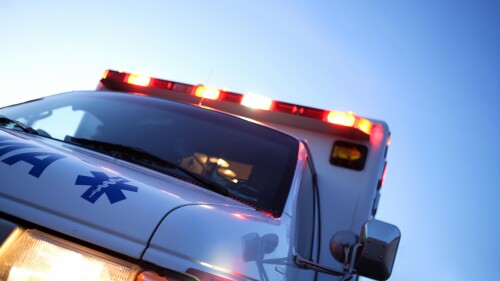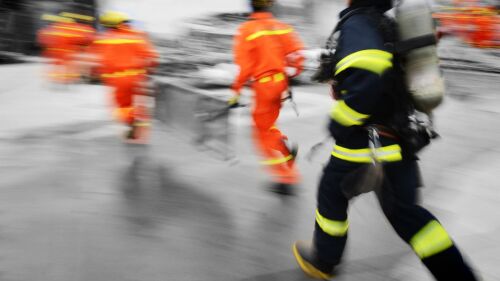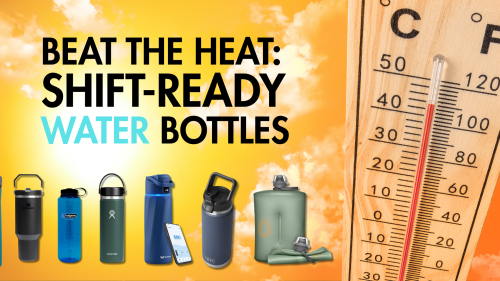BREAKING NEWS
Town officials say insurance reimbursements will exceed operating costs under Tonawanda’s scaled-back municipal ambulance program
The new station at OhioHealth Van Wert Hospital is aimed at speeding access to high-acuity and specialized care
Tunnel to Towers pays off mortgage for family of fallen Burnsville Firefighter/Paramedic Adam Finseth killed in 2024 ambush
Twelve psychiatric beds will reopen as part of Denver Health’s new Integrated Medical and Psychiatric Care Unit
Pridestar Trinity EMS, Lowell Fire and Lowell Police volunteered for the Heroes and Helpers shopping event
EXCLUSIVES
SPECIAL REPORTS
UPCOMING & ON-DEMAND EVENTS
New insight into the latest technology
Addressing the hidden dangers of cardiovascular disease
Prepare for the impact of extreme weather on critical infrastructure and EMS operations
Creating, developing and sustaining your own program, step by step
Expert perspectives on improving patient outcomes
Learn from a real-world use case of the rescue strike team and the three phases of deployment
Janet Taylor shares assessment and management tips for mastering seizure thresholds, classification and treatment approaches
What if scheduling and finalizing a transport could be done in 60 seconds?
Learn common triggers, assessment findings, and the different phases and classifications of seizures
Key findings from the Verizon Frontline Public Safety Communications survey
A detailed look at the actions leaders can take to implement a systems-level plan to protect their members
Adopting programs to improve EMS service delivery and agency culture
INDUSTRY INSIGHTS
Protecting providers starts with a glove that won’t easily fail
Small changes to how EMS approaches airway management and ventilation can make big differences in OHCA outcomes
It starts with sharpening decision-making skills
A webinar reviews key cases where the ‘most important vital sign’ helped shape care
WATCH NOW
From suspended Medicare funding to unchecked artificial intelligence, unpacking the issues threatening the system
OFF DUTY
True-to-life emergency response finally gets the Hollywood treatment it deserves
Dive into a curated collection of must-read public safety books, from thrilling accounts and leadership lessons from the front lines, to read-aloud children’s favorites
Books
Explore the books EMS leaders, EMS1 contributors and experts recommend to advance your career, build leadership skills and inspire the next generation
How new federal tax rules could affect your paycheck, deductions and long-term savings
From paddleboarding and kayaking to fishing in remote areas, discover the gear, training and self-defense strategies outdoor enthusiasts need to stay safe on the water
Insulated, smart, and high-capacity bottles designed to help first responders beat dehydration on shift and beyond
What they’ll never tell you about why we stay
I lived to retire from the ambulance company
Brian McCaffrey himself can remind your crew that “you go, we go”
PRODUCT RESEARCH CATEGORIES
Training equipment and supplies are essential for preparing EMS providers to perform critical skills safely and effectively. This topic encompasses manikins, simulation devices, task trainers, and consumable materials used in skills labs and continuing education programs. Quality training tools support realistic scenarios, hands-on practice, and competency-based assessments. Keeping training equipment current and well-maintained ensures providers are ready for real-world emergencies. For tools used during actual patient care, see Diagnostic Equipment. Explore the articles in this topic to learn how training resources support EMS education and readiness.
EMS gear supports the safety, mobility, and performance of emergency medical personnel in the field. This topic includes uniforms, footwear, outerwear, bags, belts, and protective equipment designed for daily operations and challenging environments. Proper gear improves comfort, durability, and readiness while meeting safety and agency standards. Selecting the right equipment can help reduce fatigue and minimize the risk of injury during demanding calls. For tools used during patient assessment and treatment, see Diagnostic Equipment. Explore the articles in this topic to learn more about selecting and maintaining gear that meets the needs of today’s EMS professionals.
Diagnostic equipment enables EMS providers to assess patient conditions quickly and accurately in the field. This topic encompasses various tools, including pulse oximeters, ECG monitors, capnography devices, glucometers, and blood pressure monitors. Effective use of diagnostic equipment supports clinical decision-making, guides treatment, and improves patient outcomes. EMS professionals must stay informed about new technologies, device features, and maintenance requirements to ensure optimal performance. For related tools used during transport and care, see Ambulance Disposable Supplies. Browse the articles in this topic to learn how diagnostic equipment supports prehospital assessment and care delivery.
Training simulators are key tools for building EMS skills through realistic, scenario-based learning. This topic covers high- and low-fidelity simulators used to practice airway management, trauma care, cardiac response, and other critical interventions. Simulators help EMS personnel improve decision-making, teamwork, and clinical performance in a controlled environment. They also support certification, recertification, and ongoing education. For additional resources used in EMS training, see Training Equipment & Supplies. Explore the articles in this topic to learn how simulators enhance the quality and effectiveness of EMS training programs.
Ambulance accessories play a key role in supporting EMS providers during emergency response, patient transport, and on-scene care. This topic covers essential tools and equipment such as oxygen storage systems, interior lighting, stretcher mounts, communication devices, and safety restraints. Reliable ambulance accessories help improve efficiency, protect patients and crew, and maintain readiness for all types of calls. Understanding what accessories are available—and how to use them—can support better outcomes in the field.
Patient care is the foundation of EMS, encompassing the assessment, treatment, and transport of individuals in medical or trauma emergencies. This topic covers essential practices, including airway management, bleeding control, medication administration, and patient monitoring. It also includes protocols, documentation, and communication with receiving facilities. Delivering effective patient care requires clinical knowledge, critical thinking, and adherence to current guidelines. For tools that support care delivery in the field, see Diagnostic Equipment. Explore the articles in this topic to stay informed on essential skills and strategies for high-quality EMS patient care.
The EMS1 Vehicle Accessories product category is a collection of products and information for researching EMS Vehicle Accessories and covers a variety of products, including consoles, mounts, emergency lights and laptops.
The EMS1 EMS Communications product category features products and information for researching EMS communications.
The CO Screening product category features products and information for researching CO Screening and Testing, also known as Carbon Monoxide Testing, which covers CO Screening products such as CO meters, as well as resources for carbon monoxide first responder rehabilitation.
The EMS1 Inventory & Asset Management Software product category features information, product listings and resources for researching Inventory Management.













































